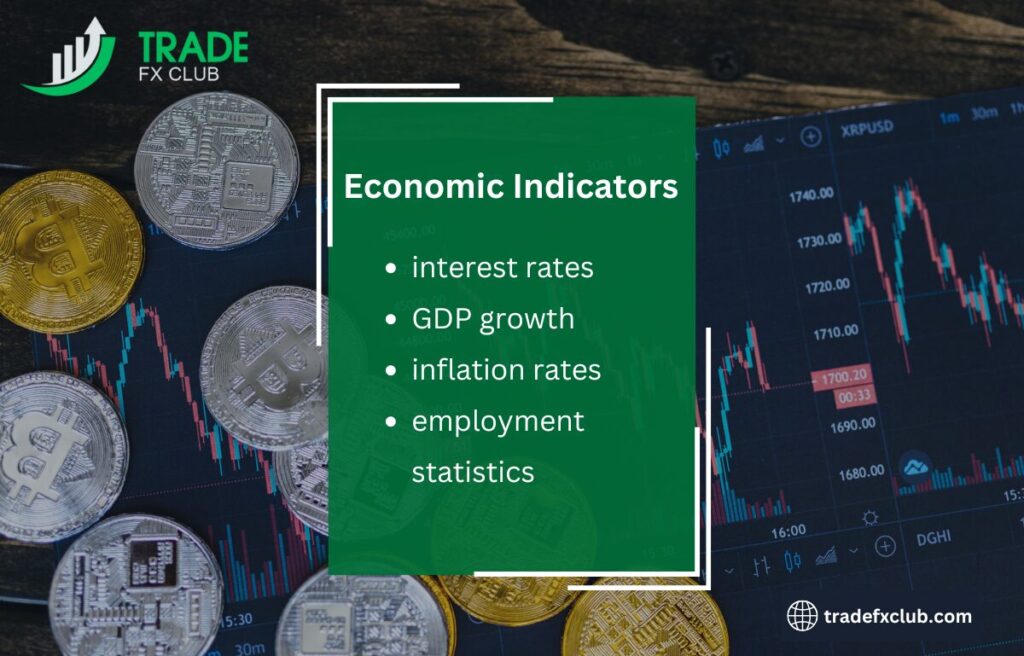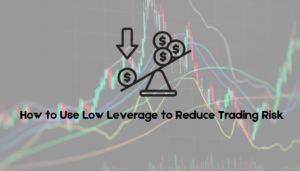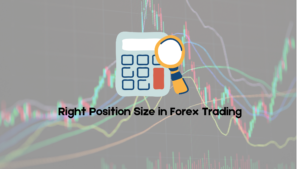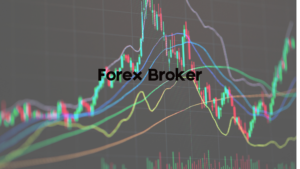In forex trading, the bid price is the price at which a trader can sell a currency pair. It represents the maximum amount that a buyer is willing to pay for a particular currency pair at a given time. The bid price is always quoted alongside the ask price, which is the price at which a trader can buy the currency pair. The difference between the bid price and the ask price is known as the spread. This spread is a key factor in trading costs and liquidity in the forex market.

For example, if the EUR/USD pair has a bid price of 1.1200, it means that buyers are willing to pay 1.1200 US dollars for one Euro. Traders who want to sell Euros will receive this bid price if they execute a trade. The bid price is critical because it reflects the current demand and supply dynamics for the currency pair, affecting the trading strategy and execution for traders.
How is the Bid Price Determined in Forex Markets?
The bid price in forex markets is determined by the forces of supply and demand within the market. It is influenced by various factors, including economic indicators, geopolitical events, interest rates, and market sentiment. For instance, if there is high demand for a particular currency, the bid price for that currency will rise as buyers are willing to pay more to acquire it. Conversely, if demand decreases, the price will fall.
Market makers, who are large financial institutions or banks, also play a significant role in setting bid prices. They continuously adjust their bid prices based on their inventory, market conditions, and their trading strategies. These market makers provide liquidity by quoting both bid and ask prices, ensuring that there is always a market for traders to buy or sell currencies.
Why Does the Bid Price Matter in Forex Trading?
It is crucial for forex traders because it determines the profitability of their trades. When traders want to sell a currency pair, they will receive the bid price, so a higher price translates into better selling conditions. Conversely, a lower bid price means traders will receive less for their trade. Understanding the bid price helps traders make informed decisions about when to enter or exit trades to maximize their returns.
Moreover, the bid price impacts the overall cost of trading. The spread between the bid and ask prices represents the transaction cost incurred by traders. A narrower spread indicates lower trading costs and higher liquidity, which is beneficial for traders. By paying attention to bid prices and spreads, traders can optimize their trading strategies and minimize costs.
What Factors Influence the Bid Price in Forex?
Several factors influence the bid price in Forex trading. Economic indicators, such as interest rates, inflation, and employment figures, can significantly impact the bid price. For instance, if a country’s central bank raises interest rates, the currency might strengthen, which could lead to higher bid prices as demand for the currency increases. Similarly, geopolitical events, such as political instability or trade disputes, can create uncertainty in the markets, affecting the bid price as traders adjust their positions in response to perceived risks.
Market sentiment also plays a crucial role in determining the bid price. Traders’ perceptions of future currency movements, influenced by news, economic reports, and other relevant information, can shift demand and supply dynamics. For example, positive news about a country’s economic outlook may boost investor confidence and increase demand for its currency, thus raising the bid price.
How Does High-Frequency Trading Influence Bid Prices?
High-frequency trading (HFT) can have a notable impact on bid prices in the Forex market. HFT involves using advanced algorithms and high-speed data networks to execute a large number of trades within fractions of a second. This rapid trading can lead to more frequent updates to bid prices as HFT firms react to market conditions and adjust their orders in real-time.
The presence of HFT can contribute to tighter bid-ask spreads and increased market liquidity by providing more buy and sell orders. However, it can also introduce volatility and price fluctuations, as the rapid pace of trading may lead to abrupt changes in bid prices. While HFT can enhance liquidity and reduce trading costs for some market participants, it can also create challenges for other traders who may find it difficult to compete with the speed and scale of HFT operations.
How Does the Bid-Ask Spread Affect Forex Trading?
The bid-ask spread is the difference between the bid price and the ask price of a currency pair. This spread represents the transaction cost for traders and can vary depending on market conditions. A narrower spread typically indicates high liquidity and lower trading costs, while a wider spread suggests lower liquidity and higher costs. Traders should be aware of the spread as it directly impacts their potential profits or losses. In highly liquid markets, such as major currency pairs like EUR/USD, the spread is usually tighter, making it more cost-effective for traders.
The spread can also reflect market volatility. During periods of high volatility, spreads may widen due to increased uncertainty and risk. Conversely, in stable market conditions, spreads tend to be narrower. Traders need to account for the spread when placing trades, as it can affect their overall trading strategy and decision-making process.
What Role Does Liquidity Play in Determining Bid Prices?
Liquidity is a critical factor in determining bid prices in Forex markets. Liquidity refers to the ease with which a currency can be bought or sold without significantly affecting its price. High liquidity means there are many buyers and sellers in the market, leading to tighter bid-ask spreads and more stable bid prices. In contrast, low liquidity can result in wider spreads and more volatile bid prices, as fewer participants may lead to greater price fluctuations.
Major currency pairs, such as EUR/USD and USD/JPY, tend to be highly liquid due to their large trading volumes and frequent transactions. This high liquidity ensures that bid prices are more stable and that trades can be executed efficiently. On the other hand, less frequently traded or exotic currency pairs may experience lower liquidity, which can lead to more significant bid price changes and potentially higher trading costs.
How Do Economic Indicators Impact the Bid Price in Forex?
Economic indicators have a profound impact on bid prices in Forex trading because they provide insight into a country’s economic health and performance. Key indicators include interest rates, GDP growth, inflation rates, and employment statistics. For example, if a country releases a strong GDP growth report, it can signal a robust economic environment, leading to an increase in demand for its currency. As a result, the bid price for that currency might rise because investors anticipate stronger future economic performance.

Interest rate decisions are particularly influential. When a central bank raises interest rates, it often leads to higher bid-prices for that country’s currency, as higher rates can attract foreign investment seeking better returns. Conversely, if economic indicators suggest a weakening economy, such as rising unemployment or declining industrial output, the bid-price for the currency may fall as traders become less confident about the currency’s future value.
How Can Traders Analyze Bid Prices for Better Forex Strategies?
Traders can analyze it effectively by using technical and fundamental analysis. Technical analysis involves studying historical price data and chart patterns to identify trends and potential reversal points. By observing bid-price movements and the bid-ask spread over time, traders can gain insights into market sentiment and make informed decisions about entry and exit points.
Fundamental analysis, on the other hand, focuses on economic indicators and news events. Traders should monitor economic reports, central bank announcements, and geopolitical events that can influence bid-prices. For example, a trader might analyze how recent interest rate changes or economic data releases have impacted bid prices in the past to develop a strategy for future trades. Combining both analyses can provide a comprehensive view of the market and improve the effectiveness of trading strategies.
What Are Common Misconceptions About Bid Prices in Forex?
One common misconception is that they represent the true market value of a currency. While the bid-price indicates the maximum price buyers are willing to pay at a given moment, it is only one side of the market. The bid price alone does not reflect the full picture, as it needs to be considered alongside the ask price to understand the overall market dynamics and transaction costs.
Another misconception is that it remains constant throughout the trading day. In reality, bid-prices fluctuate continuously based on supply and demand, market sentiment, and economic news. Traders might mistakenly believe that bid-prices are stable or predictable, which can lead to incorrect assumptions about market conditions and potential profits. It’s essential for traders to recognize the volatility and dynamic nature of bid-prices and to incorporate this understanding into their trading strategies.
How Do Bid Prices Differ Across Various Currency Pairs?
Bid prices can vary significantly across different currency pairs due to factors like liquidity, volatility, and market demand. Major currency pairs, such as EUR/USD, USD/JPY, and GBP/USD, tend to have tighter bid-ask spreads and more stable bid prices because they are highly liquid and frequently traded. The high volume of transactions in these pairs means there is greater competition among buyers and sellers, which contributes to more stable and predictable bid-prices.
In contrast, exotic currency pairs, such as USD/TRY (US Dollar/Turkish Lira) or EUR/ZAR (Euro/South African Rand), often exhibit wider bid-ask spreads and more volatile bid prices. This is due to lower liquidity and less frequent trading activity, which can lead to greater price swings and less favorable trading conditions. The disparity in liquidity and trading volume between major and exotic pairs can lead to differences in bid prices and overall trading costs.
What Tools and Platforms Help Monitor Bid Prices in Forex?
Several tools and platforms are available to help traders monitor bid-prices in Forex. Trading platforms like Meta Trader 4 (MT4) and Meta Trader 5 (MT5) provide real-time bid-price data, along with advanced charting tools and technical indicators. These platforms allow traders to view live bid prices, analyze historical data, and execute trades based on their analysis.
In addition to trading platforms, financial news websites and economic calendars offer valuable information about factors that influence bid prices. Websites such as Bloomberg, Reuters, and Investing.com provide real-time updates on economic events, news releases, and market analysis that can impact bid-prices. Many traders also use specialized Forex apps and tools to track bid prices on the go and stay informed about market developments.
What is the Relationship Between Bid Price and Market Volatility?
The relationship between bid-price and market volatility is closely intertwined. Market volatility refers to the extent of variation in asset prices over time. When volatility is high, bid prices can experience rapid and significant changes. This is because increased uncertainty or fluctuating market conditions lead to more frequent and larger adjustments in bid prices as traders react to new information and shifting market sentiment.
During periods of high volatility, bid-ask spreads tend to widen as market participants demand higher compensation for the increased risk. This can lead to less favorable bid prices for traders, as the cost of executing trades becomes more expensive. Conversely, during low volatility periods, bid prices are generally more stable, and bid-ask spreads are narrower, reflecting a more predictable and orderly market environment.
How Do Central Bank Policies Affect Bid Prices in Forex?
Central bank policies have a substantial impact on bid-prices in the Forex market. Key aspects of central bank policy, such as interest rate decisions, quantitative easing, and monetary policy statements, can influence currency values and consequently affect bid-prices. For example, when a central bank raises interest rates, it often leads to a stronger currency as higher rates attract foreign investment seeking better returns. This increase in demand for the currency can drive up the bid price.
Conversely, if a central bank adopts a policy of monetary easing or lowers interest rates, it can weaken the currency, leading to a lower bid-price. Central bank actions and announcements are closely watched by Forex traders, as these policies can signal changes in economic conditions and influence market expectations. Traders often adjust their positions based on anticipated central bank moves, which can lead to fluctuations in bid-prices before and after policy decisions are announced.
What Strategies Can Traders Use When Bid Prices Fluctuate?
When bid-prices fluctuate, traders can employ several strategies to manage their trades effectively. One common approach is to use technical analysis to identify patterns and trends in bid-prices. By analyzing historical price data, traders can develop insights into potential price movements and establish support and resistance levels. This analysis can help traders make informed decisions about entry and exit points, even in volatile conditions.
Another strategy is to implement risk management techniques such as stop-loss orders and take-profit orders. Stop-loss orders can limit potential losses by automatically closing a trade when the bid-price reaches a certain level, while take-profit orders lock in profits when the bid price hits a predefined target. Additionally, traders might use hedging strategies to protect against adverse price movements by taking offsetting positions. Adapting these strategies to account for bid price fluctuations can help traders navigate market volatility and manage their risk more effectively.
How to Use Bid Price Data for Predicting Market Movements?
Bid-price data can be instrumental in predicting market movements when combined with technical and fundamental analysis. Traders often use bid price data to analyze price trends and patterns, which can offer insights into future market behavior. By examining historical bid price data, traders can identify recurring patterns, such as support and resistance levels, trendlines, and chart formations. This analysis helps traders anticipate potential price movements and make informed trading decisions.
Additionally, bid-price data can be used in conjunction with technical indicators like moving averages, Relative Strength Index (RSI), and Bollinger Bands. These indicators help traders gauge the strength of price trends and identify overbought or oversold conditions. For example, if bid-prices are consistently approaching resistance levels and showing signs of consolidation, traders might predict a potential price reversal or breakout. Combining bid-price data with other analytical tools enhances the accuracy of market predictions and improves trading strategies.
What are the Risks Associated with Bid Prices in Forex Trading?
One major risk associated with bid-prices in Forex trading is slippage. Slippage occurs when there is a difference between the expected bid-price and the actual execution price due to market volatility or rapid price changes. This can result in trades being executed at less favorable prices, impacting overall trading performance and profitability. Slippage is particularly common during high volatility periods or when trading less liquid currency pairs with wider bid-ask spreads.

Another risk is the potential for bid-price manipulation in low liquidity markets. In markets with low trading volume, large trades or market orders can significantly influence bid-prices, leading to temporary price distortions. This can create an environment where bid prices do not accurately reflect the true market value, increasing the risk of unfavorable trade executions. Traders need to be aware of these risks and implement strategies such as setting appropriate stop-loss orders and trading during periods of high liquidity to mitigate potential adverse effects.
How Does the Bid Price Impact Forex Scalping Strategies?
Bid-price plays a crucial role in Forex scalping strategies, which involve making multiple small trades to capture minor price movements. Scalpers rely on the bid-ask spread to determine their potential profitability. A narrower spread between the bid and ask prices is advantageous for scalpers, as it reduces the cost of entering and exiting trades. Scalpers aim to profit from small price changes, so minimizing the spread is essential for maximizing gains.
The bid-price’s volatility can also affect scalping strategies. High volatility can lead to more significant price swings, which might provide more opportunities for profit but also increase the risk of losses. Scalpers need to monitor bid-prices closely and react quickly to changing market conditions to seize trading opportunities. Effective scalping requires precise execution and real-time bid-price data to make rapid trading decisions and manage trades efficiently.
How to Identify Arbitrage Opportunities Using Bid Prices?
Arbitrage opportunities arise when a trader can exploit price differences of the same asset across different markets or instruments to make a profit with minimal risk. In Forex trading, identifying arbitrage opportunities involves comparing bid prices for the same currency pair across different brokers or platforms. If a currency pair is priced lower on one platform (higher bid-price) compared to another, a trader can buy it at the lower price and simultaneously sell it at the higher price, locking in a profit from the price discrepancy.
To identify these opportunities, traders often use automated systems or algorithms that continuously monitor bid-prices across multiple exchanges. These systems can detect discrepancies in real-time and execute trades swiftly to capitalize on the differences before they disappear. Traders should also consider transaction costs and liquidity, as these factors can impact the profitability of arbitrage opportunities. Effective arbitrage requires precision and speed, making advanced tools and a thorough understanding of market conditions essential for success.
How Can Bid Price Analysis Improve Forex Trading Outcomes?
Bid price analysis can significantly enhance Forex trading outcomes by providing insights into market trends and price movements. By studying bid prices over time, traders can identify patterns and trends that help in forecasting future price behavior. For example, analyzing historical bid price data can reveal support and resistance levels, trend lines, and price patterns that are critical for making informed trading decisions. Understanding these patterns helps traders anticipate potential price reversals or breakouts, improving the accuracy of their trades.
Additionally, bid price analysis can aid in optimizing trading strategies. Traders can use bid-price data to assess the effectiveness of their strategies by comparing the performance of their trades against historical bid-price movements. This analysis can help refine trading techniques, adjust entry and exit points, and manage risk more effectively. By integrating bid-price analysis with other analytical tools and strategies, traders can enhance their decision-making process and achieve better trading outcomes.
Bid-prices play a critical role in Forex trading, influencing everything from market liquidity to trading strategies. Understanding how bid-prices are determined and how they interact with market volatility, economic indicators, and central bank policies can significantly enhance a trader’s ability to make informed decisions. By leveraging bid price data, traders can identify trends, anticipate market movements, and exploit arbitrage opportunities to improve their trading outcomes.
Effective analysis of bid-prices not only aids in predicting market shifts but also helps in refining trading strategies and managing risks. Whether through technical and fundamental analysis or by monitoring bid-ask spreads, a deep understanding of bid-prices equips traders with the tools needed to navigate the complexities of the Forex market. Ultimately, mastering bid-price dynamics is essential for optimizing trading performance and achieving long-term success in Forex trading.







